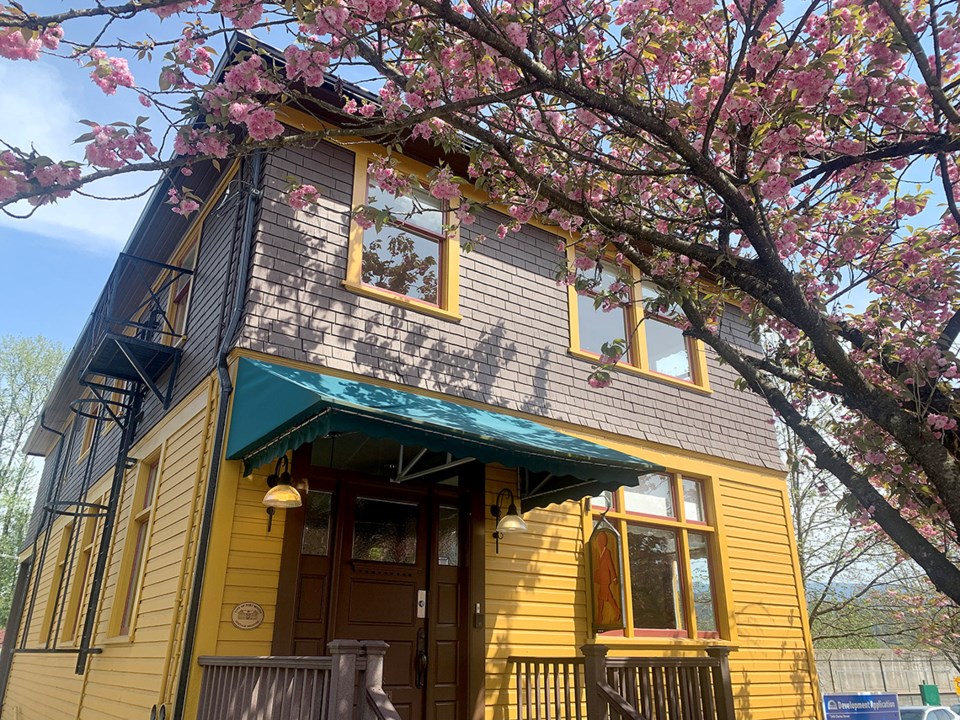A protected heritage building in Port Moody could soon be afforded even more protection.
At a meeting on April 18, the city initiatives and planning committee gave its support to an application for a development variance permit to rezone 2346 Clarke St. from light industrial use to general commercial.
The committee also said the application could proceed to council without a public hearing.
The building that occupies the 2,281 sq-ft. site was built in 1914 as a new home for the Royal Bank, which had opened Port Moody’s first bank branch seven years earlier in leased premises nearby.
The bank occupied the structure until 1956, and since then, it’s had various commercial tenants, including, Mayor Meghan Lahti recalled, a Sears outlet shop, as well as other small retailers and offices.
But, in the 1980s, the property was zoned for light industrial uses, although Port Moody development planner Andrei Boel couldn’t say why that might have happened.
Carola Thompson, a consultant working with the property’s current owners who are looking to sell, said that could put some of the heritage components of the building at risk should new owners decide to gut the interior for an industrial purpose.
A covenant protects the building’s exterior features but that doesn’t extend to its interior, which still features the original bank vault, fir floors, mouldings and baseboards, and a warren of offices on the second floor that were originally used as living quarters for bank staff, according to Canada’s register of historic places.
Thompson said the current owners did much of the work to restore the building’s interior and exterior to their original state and they want to ensure those character-defining features are preserved.
“Industrial uses and small protected heritage buildings aren’t a good match,” she said.
Boel said, given the building’s location in Port Moody’s downtown heritage conservation area and its long history as a commercial building, entrenching that use through rezoning makes sense.
That would allow future owners to repurpose it for anything from artists’ studios, to childcare to live/work units to a restaurant, offices or shops without necessarily compromising its heritage interior.
“Preserving the building is more compatible with retaining the interior of the building with commercial uses than industrial uses,” he said in a report.

.jpg;w=120;h=80;mode=crop)

